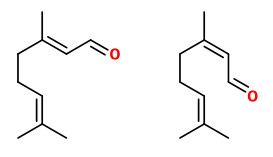Benutzer-Werkzeuge
Aloysia citrodora Paláu - syn. Aloysia triphylla (L'Hér.) Britton; Lippia citrodora Kunth - Verbenaceae
lemon verbena, lemon beebrush, Zitronenverbene, Zitronenstrauch, Echte Verbene
Perennial herb or small shrub, up to 3m tall, native to South America (Argentinia, Chile), cultivated (Israel, Morocco); leaves in whorls of 3 or 4, lanceolate, 5-7.5 cm long, short-petioled, shiny green, fragrant; spikes whorled and axillary or collected in terminal panicles often 4-5 cm across; flowers white, about 0.5 cm long, calyx densely puberulent; corolla-tube longer than calyx.
http://www.missouribotanicalgarden.org/PlantFinder/PlantFinderDetails.aspx?kempercode=c962
„Lemon verbena is a perennial shrub or subshrub growing to 2-3 m high. The 8cm long glossy, pointed leaves are slightly rough to the touch and emit a powerful scent reminiscent of lemon when bruised (hence the Latin specific epithet citrodora - lemon-scented)… Lemon verbena leaves are used to add a lemon flavor to fish and poultry dishes, vegetable marinades, salad dressings, jams, puddings, Greek yogurt and beverages. It also is used to make herbal teas, or added to standard tea in place of actual lemon (as is common with Moroccan tea).“ http://en.wikipedia.org/wiki/Aloysia_citrodora
The woody, balsamic smelling 3,7-caryophyllane epoxide has been found in small amounts in verbena oil.
[Kaiser, Roman, and Dietmar Lamparsky. „Caryophyllane epoxide.“ U.S. Patent No. 3,978,089. 31 Aug. 1976]
„The chemical composition of the largely used tea from lemon verbena, Aloysia triphylla, was investigated. The qualitative and quantitative composition of the main aromatic and polyphenolic constituents of tea made by infusion from leaves were examined. The results showed that the relative proportions of the active constituents differ from those of the original leaves. The tea contained a large amount of polyphenolic compounds (mean value 675 mg/l; extraction yield 65%) including verbascoside (400 mg/l) and luteolin 7-diglucuronide (100 mg/l). It contained also 42 mg/l of essential oil (extraction yield 51%) with much more citral (77% of the essential oil) than the original leaves (41%).“
[The aromatic and polyphenolic composition of lemon verbena tea, A Carnat, A.P Carnat, D Fraisse, J.L Lamaison, Fitoterapia, Vol.70 (1), 1999, 44-49]
Geranial, neral and limonene constituted 66% of the total essential oil extracted from fresh leaves in May and increased to 69% in September. Geranial and neral decreased from 38.7 to 26.8% and from 24.5 to 21.8%, respectively, and limonene increased from 5.8 to 17.7%.
[Chemical composition of the essential oil from leaves of Lippia citriodora HBK (Verbenaceae) at two developmental stages., Argyropoulou, C., Daferera, D., Tarantilis, P.A., Fasseas, C., Polissiou, M., Biochemical Systematics and Ecology, 35(12), 2007, 831-837]
The essential oil extracted from the leaves had as major compounds geranial (11.3%), limonene (10.6%), neral (7.9%), 4-phenyl undecan-4-ol (7.7%), α-curcumene (6.5%), α-cedrol (4.5%) and caryophyllene oxide (4.5%). The oil contained also carveol (3.7%), linalool (3.5%), α-pinene (3.2%), caryophyllene (2.8%), geranyl acetate (1.8%), nerolidol (1.5%), rose furan epoxide (1.5%) and khusinol (1.2%).
[Chemical composition and insecticide activity of lemon verbena essential oil., Abbas Khani, Farzaneh Basavand, Ehsan Rakhshani, J. Crop Prot., Vol.1(4), 2012, 313-320] http://journals.modares.ac.ir/pdf_334_7e48077f51ba1d2b6bcbfd8fe31846eb.html
Main components of commercial French essential oil were (-)-limonene (14-34%), neral (2.7-14%), geranial (4,3-21%), 1,8-cineole (4.9-14%), β-caryophyllene (1.4-7.1%), ar-curcumene (0.6-9.0%), and β-curcumene (1.4-7.1%); whereas Peruvian oils contain sabinene (22-34%), limonene (29-43%), citronellal (6.6-13%), 1,8-cineole (2.9-5.7%), but only minor amounts of citral (neral 0.2-0.7%; geranial 0.5-1.0%). Citral content is regarded as value-determining feature.
[Wolz, Dietmar, and Gerhard Buchbauer. Aromatherapie in Wissenschaft und Praxis. Ed. Wolfgang Steflitsch. Stadelmann, 2013, 510-516]

Duhamel du Monceau,H.L., Traité des arbres et arbustes, Nouvelle édition [Nouveau Duhamel], vol.4, t.6 (1809) [P.J.Redouté]
http://plantgenera.org/species.php?id_species=45559
Aloysia triphylla
© Rolf Marschner (2010),
www.botanische-spaziergaenge.at


